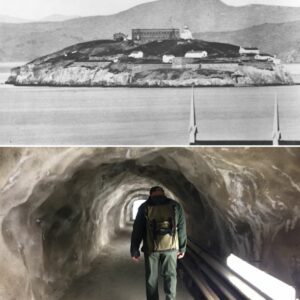Over the years, playgrounds have become safer, more educational, and more controlled. Today’s playgrounds are designed with soft materials and built-in safety features to protect children from injury. But if we look back to the 1880s to the 1940s, playgrounds were a completely different world. They were places where kids learned resilience, faced real physical challenges, and developed emotional strength by taking risks. In this article, we take a step back in time to explore the dangerous playgrounds of the past through vintage photographs and reflect on their role in shaping childhood experiences.
The Rise of Dangerous Playgrounds (1880s-1910s)
The earliest playgrounds were not designed for safety; rather, they were built to provide an outlet for children’s energy and help them develop physical strength. The first playground in the USA, built in San Francisco’s Golden Gate Park in 1887, was a far cry from the modern, cushioned play areas we know today. It was a place where kids could climb, swing, and jump—often from dangerous heights. The early playgrounds of Detroit’s Belle Isle Park (1900-1905) and St. Paul’s Harriet Island (1905) were designed to be tough. They featured swings, slides, and climbing structures that were made of metal and wood, offering little to no safety precautions.

The idea was to get children off the dangerous streets, away from industrial areas, and give them a space to explore and socialize. But these playgrounds were also challenging, giving children the opportunity to face their fears and test their limits. Even back then, play was seen as a way to foster physical health, social skills, and, perhaps more importantly, emotional toughness.
Video
Watch the video to see incredibly unique kids’ playgrounds from the early 20th century and how they shaped childhood play back then!
The Purpose Behind Early Playgrounds

The playground movement, which began in Europe and spread to America, was deeply rooted in humanitarian ideals. In Germany, the idea of playgrounds was tied to the belief that children needed a structured space where they could develop not only physically, but socially and emotionally. Playground areas were seen as necessary for providing children with an outlet that kept them away from the dangerous streets, particularly in overcrowded cities.
By the time playgrounds made their way to the United States, especially after the formation of the Playground Association of America in 1906, there was a strong push for developing structured play areas for children. These early playgrounds were designed to teach children fair play and encourage the development of good manners while also enhancing their physical fitness.
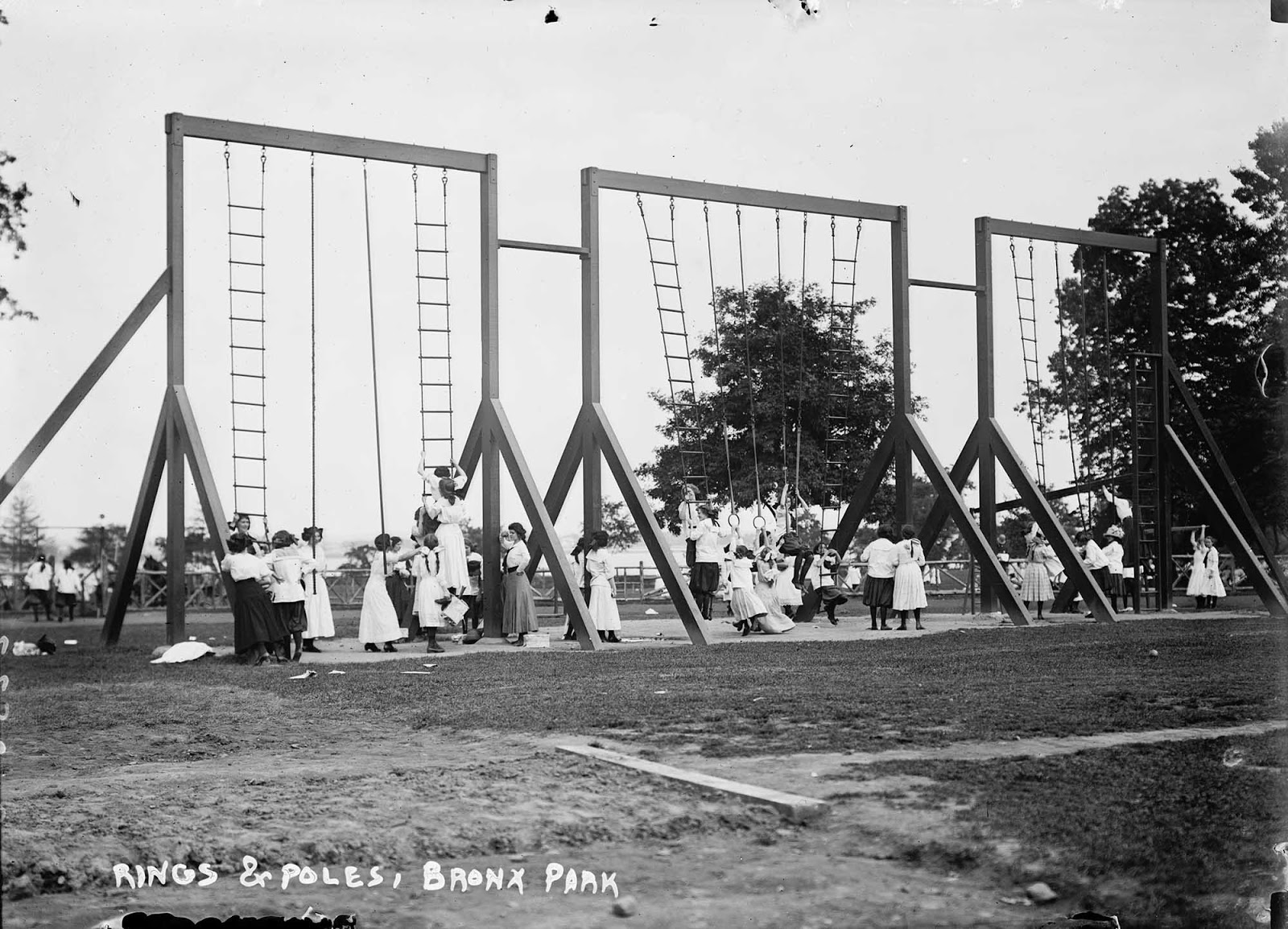
Despite the lack of safety regulations at the time, these playgrounds were viewed as educational tools that helped children hone life skills. The parks were also designed to combat social isolation and improve public health by providing clean, open spaces for recreation.
Playgrounds as Emotional Training Grounds
Although many of us see playgrounds as places for fun, they were once considered emotional training grounds. As strange as it may sound today, early playgrounds were places where children learned to manage their fears and anxieties through physical risk-taking. Researchers, such as Ellen Sandseter, argue that children need to encounter risks and overcome fears to develop emotional strength.
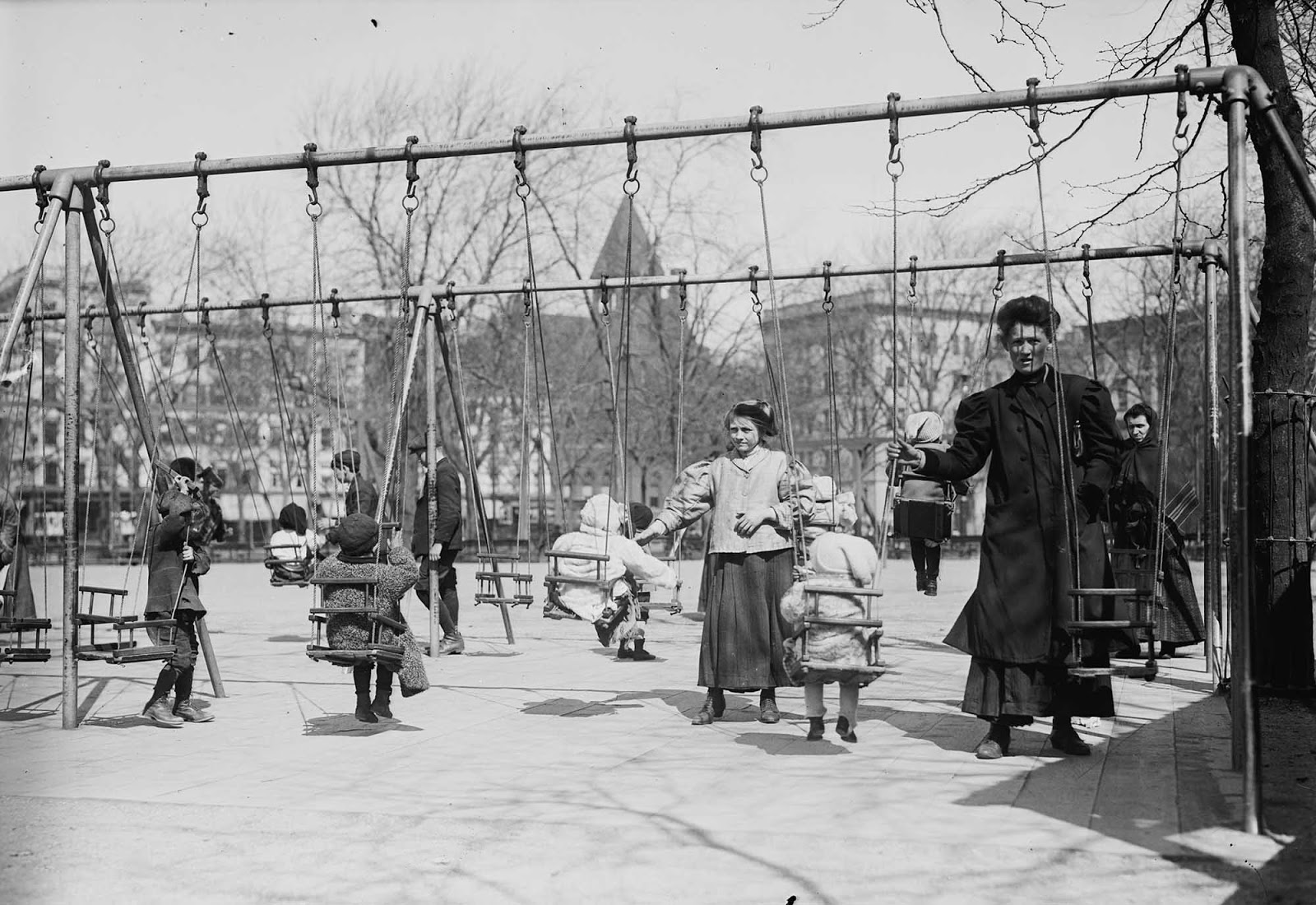
For instance, children who took falls from high swings or climbed to great heights learned to overcome their fear of physical pain. Interestingly, studies have shown that children who experienced falls before the age of nine were less likely to develop a fear of heights in their teenage years. This process of gradual exposure to physical risks was comparable to techniques used in modern therapy to treat phobias.
These early playgrounds were teaching children the value of resilience and bravery—traits that are often overlooked in today’s ultra-safe play areas.
The 1920s to 1940s: A Period of Change
By the 1920s, playgrounds began to shift in design. Although physical risks remained a part of play, new designs started to include safety measures. Metal and wooden structures were gradually replaced by more user-friendly designs. Playground equipment, such as swings and slides, were made more stable, and some parks introduced safety mats to cushion falls.
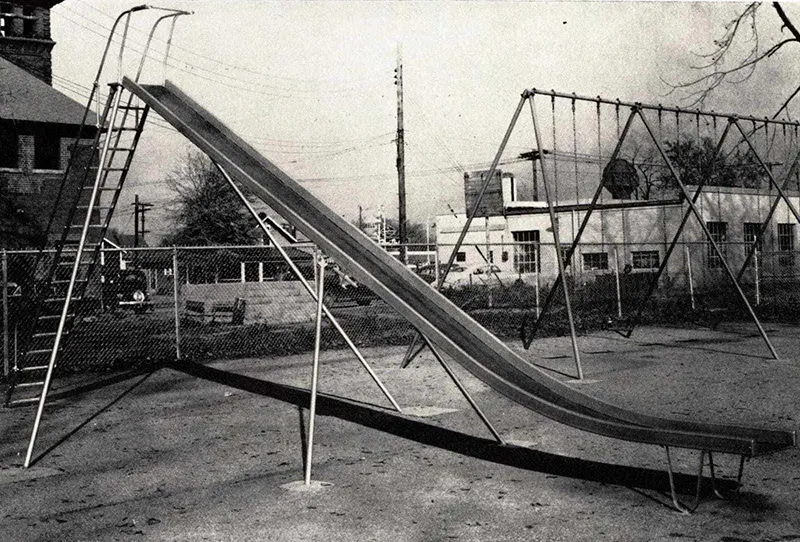
The industrial boom during this time also brought about the construction of large, public playgrounds in cities across the country. With more space and a larger population of children, playgrounds began to take on an organized structure. However, the spirit of adventure was not entirely lost. Children continued to climb, jump, and run, challenging themselves in ways that modern playgrounds often don’t allow.
The Influence of Safety Regulations
By the mid-20th century, things began to change more dramatically. As awareness of child safety increased and legal pressures mounted, playgrounds were designed with more attention to preventing accidents. In the post-World War II era, public concerns over safety resulted in more regulations being put into place.
Cushioned ground coverings, fences, and safer designs for equipment became the norm. In response to growing concerns about liability and injury, cities began to replace high, metal slides and towers with more modern designs that emphasized educational value over risk. Safety became a primary focus, and by the 1970s, the image of the “dangerous” playground slowly faded away.
Modern Perspectives on Playground Safety vs. Emotional Growth
Today, playgrounds are seen less as places of risk and more as spaces for structured play and education. But is this shift entirely beneficial? Some experts argue that the overly cautious nature of modern playgrounds may not foster the emotional and social resilience children need. Critics of “safety-first” playgrounds claim that kids today might not develop the same emotional intelligence or coping skills that previous generations gained through facing fears and handling physical risks.
Dr. Sandseter’s research highlights that children need opportunities to face fears and develop problem-solving skills. When children are overprotected and not allowed to take risks, they may struggle to cope with challenges in other areas of their lives. A fall or a scraped knee may hurt temporarily, but learning to get up and try again can have lasting benefits for a child’s development.
Gallery: Vintage Photographs of Early Playgrounds
To truly understand the difference between old and new playgrounds, it helps to look at vintage photographs. Pictures from the early 1900s, such as those taken in Detroit’s Belle Isle Park (1900-1905) and St. Paul’s Harriet Island (1905), show playgrounds filled with metal structures, children pushing their limits, and play areas that encouraged exploration and adventure. These photos capture the true essence of childhood in an era when risks were inherent in everyday life.
The images remind us that the playgrounds of yesteryear were not just for physical fun—they were tools for shaping emotionally strong and resilient individuals.
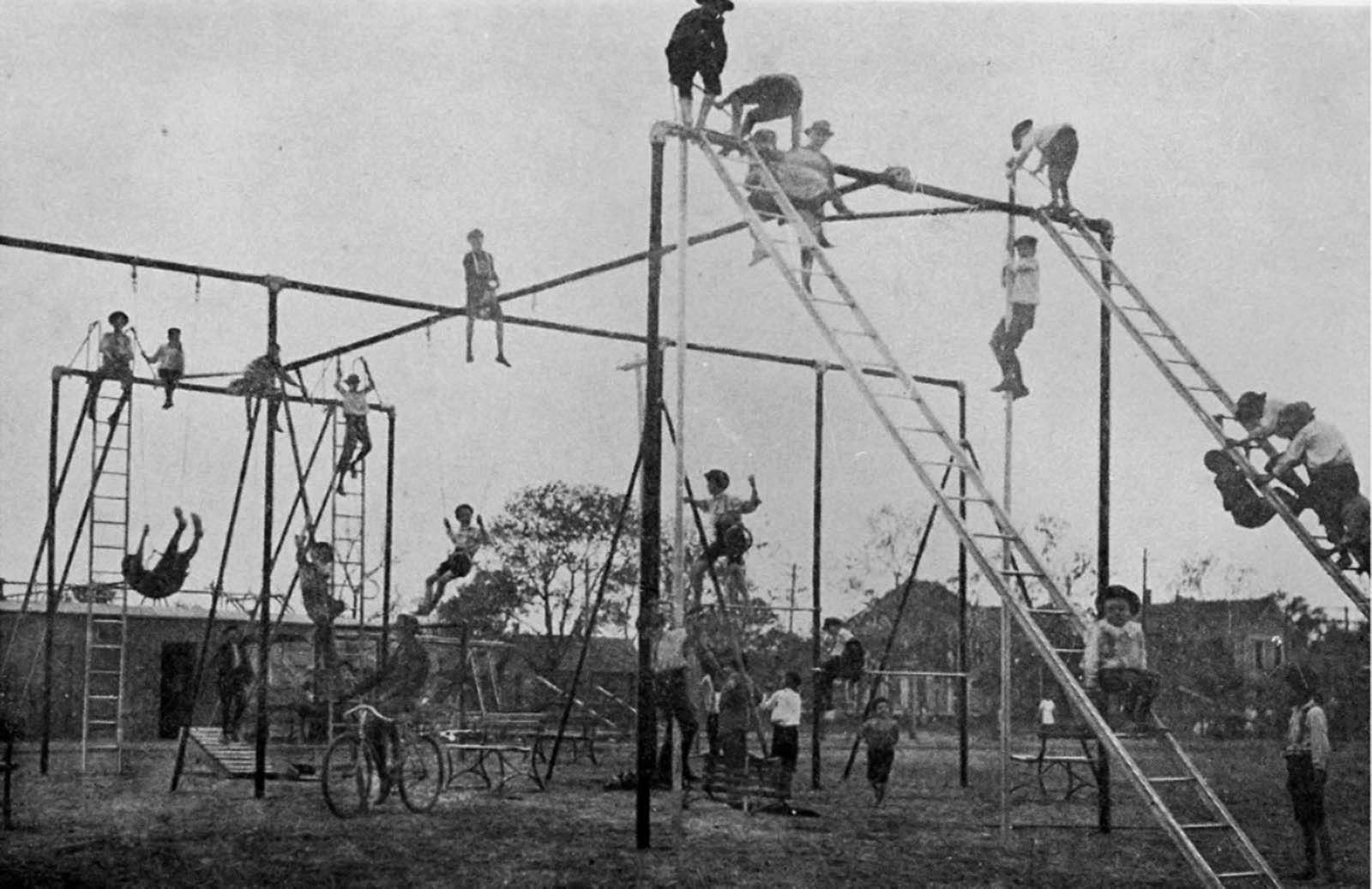


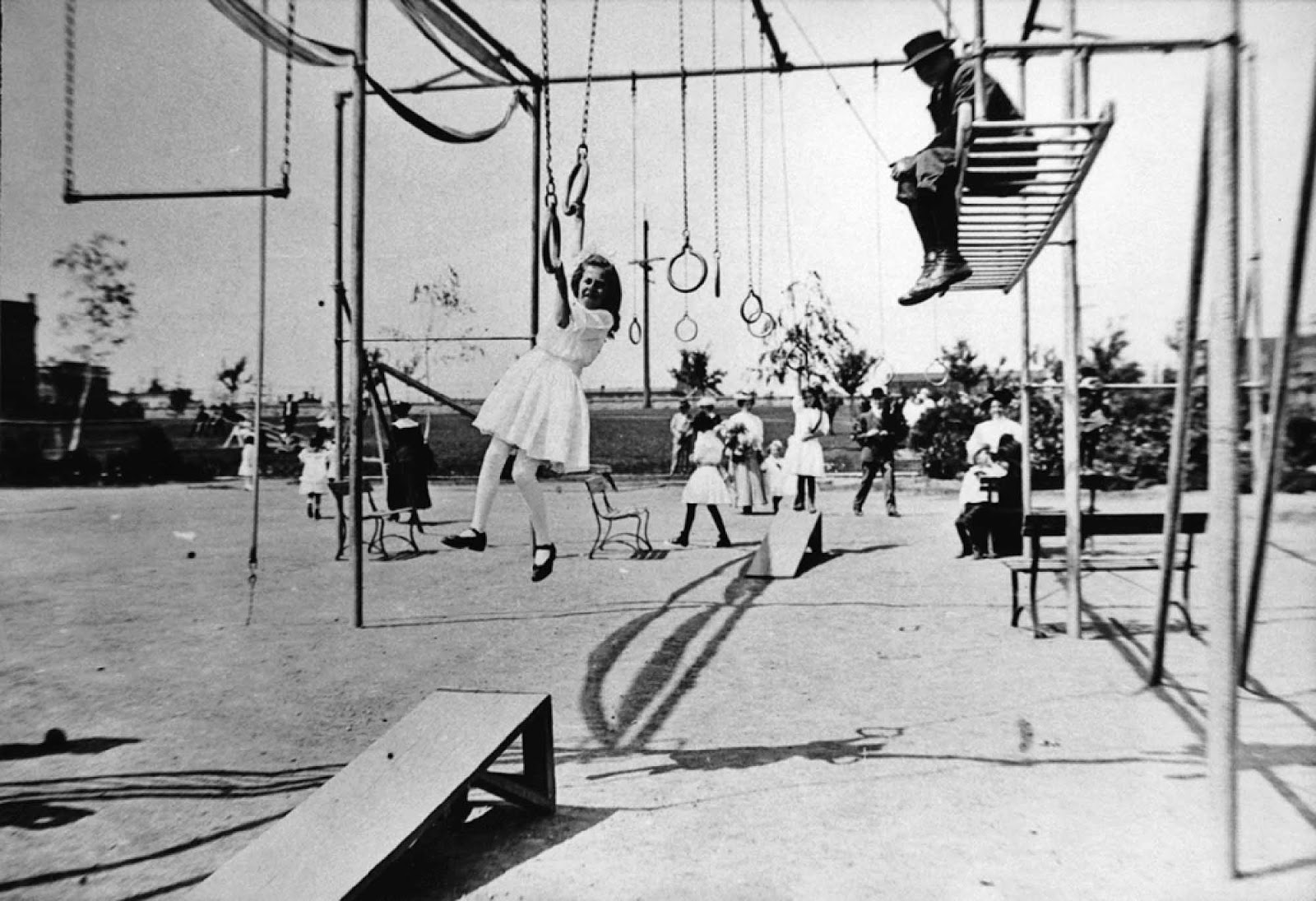
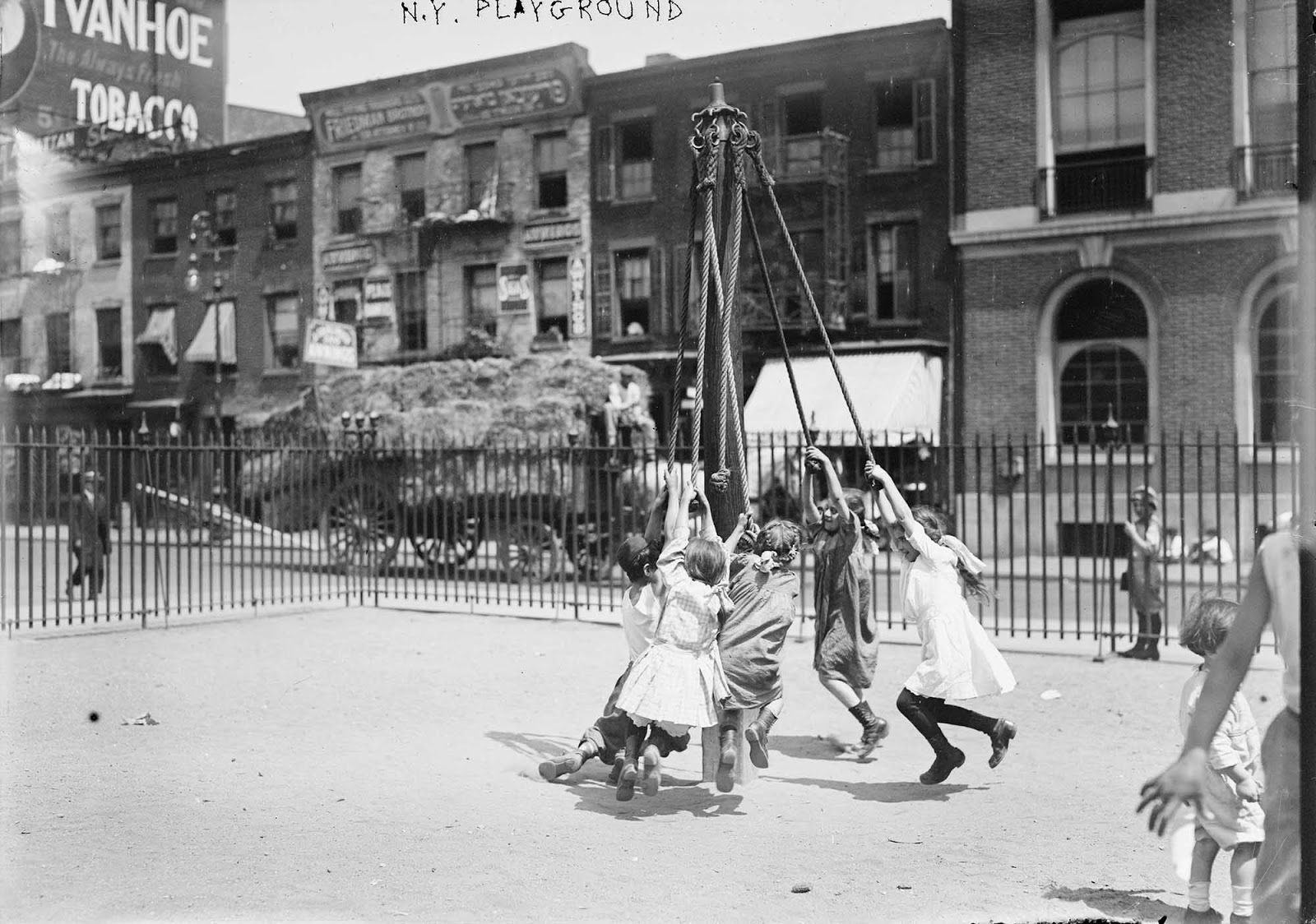


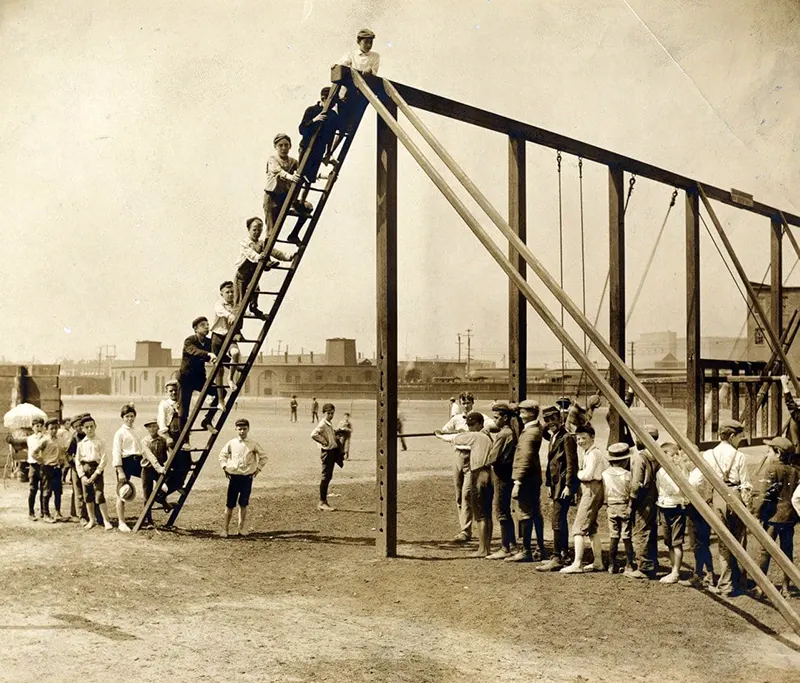



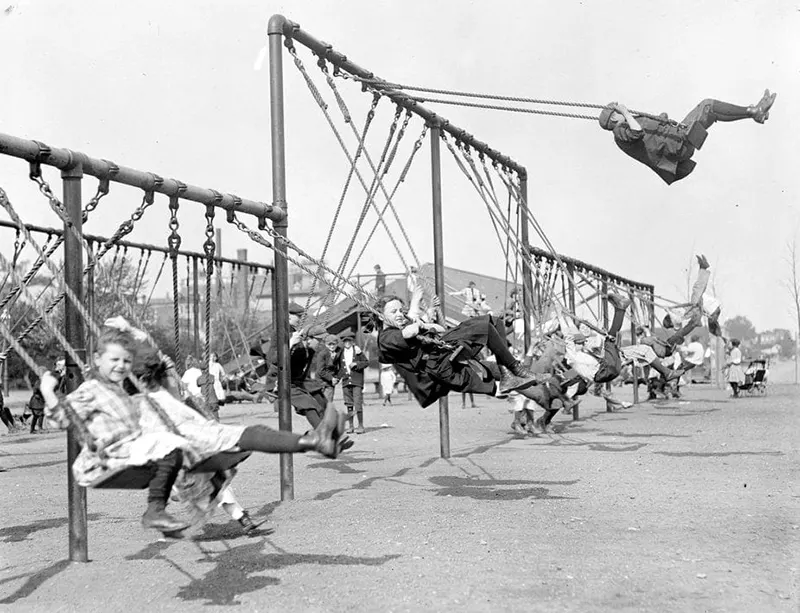

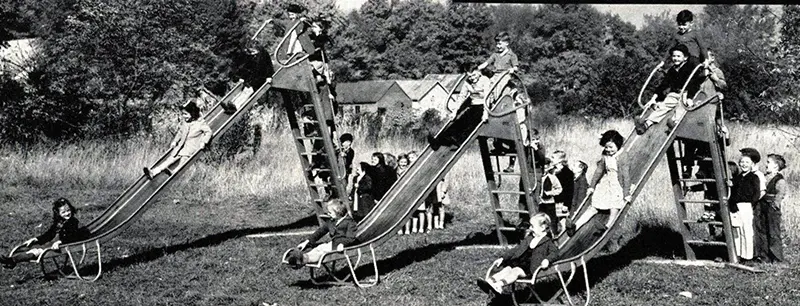
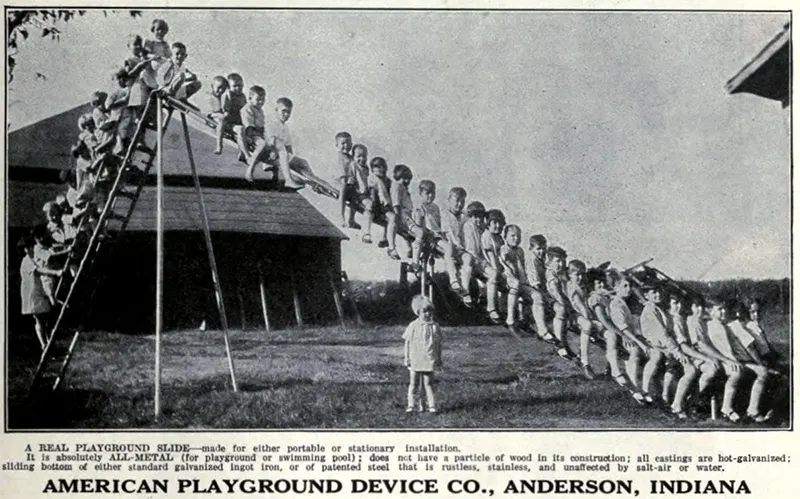






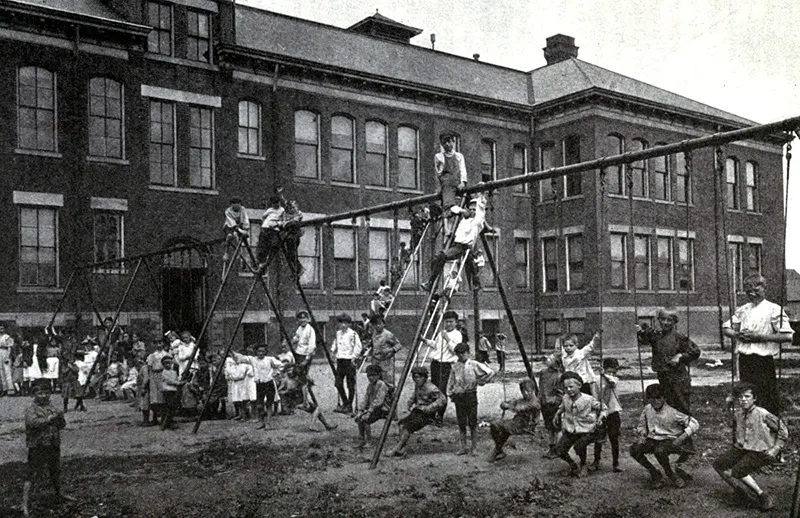




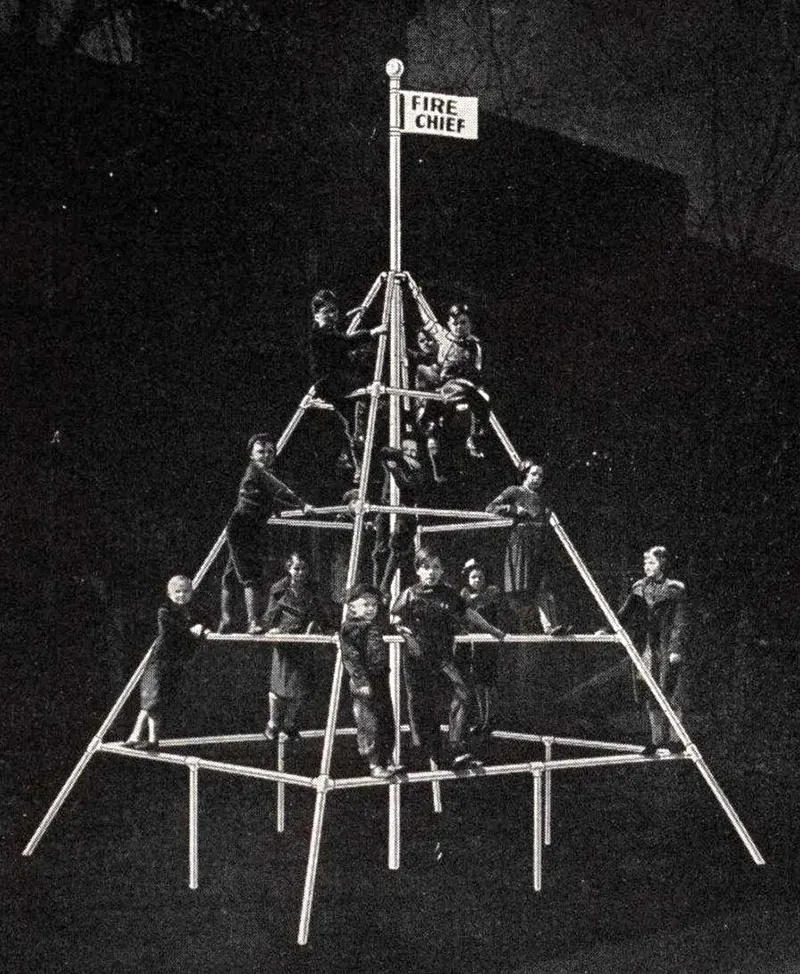





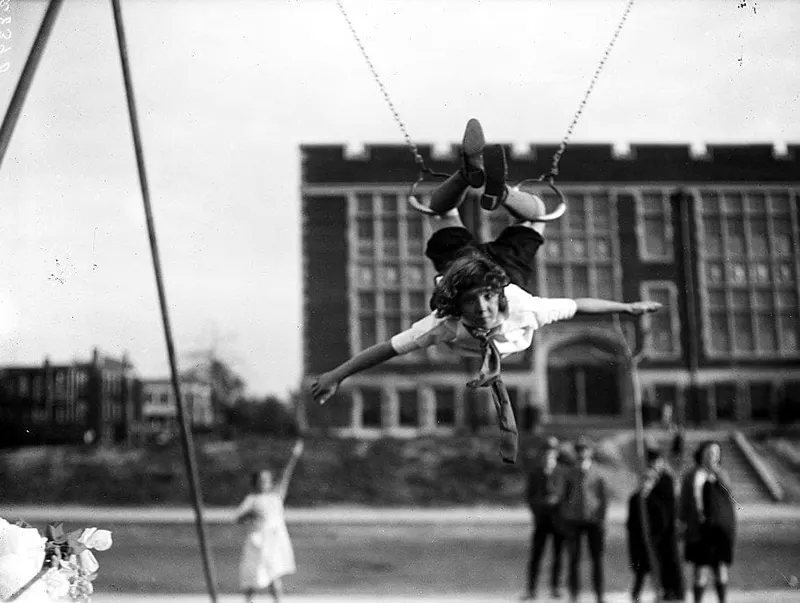



Video
Watch the video to explore survival in New York’s brutal Five Points Slum (The Bend on Mulberry Street) and discover the harsh conditions of this notorious area.
Conclusion: Rediscovering the Value of Risk in Play
The playgrounds of the past serve as a fascinating reminder of a different era in childhood development. While modern playgrounds offer safety and educational benefits, the daring and adventurous spirit of older playgrounds should not be forgotten. Perhaps, in today’s world, it’s time to find a balance between fun and risk, teaching children that a bit of danger can go a long way in shaping their emotional and social growth.
Looking back at the vintage playgrounds, we can see how they shaped a generation of children who learned, through real-life experiences, how to handle challenges and fears—lessons that are as valuable today as they were a century ago.

